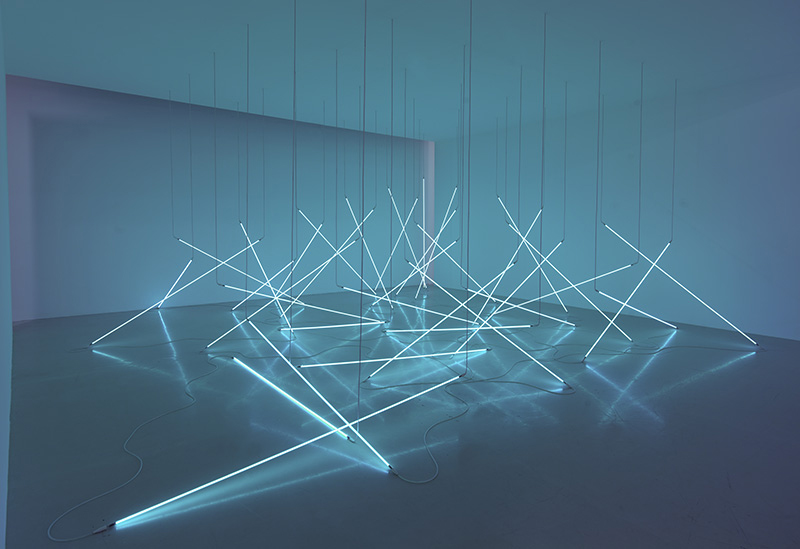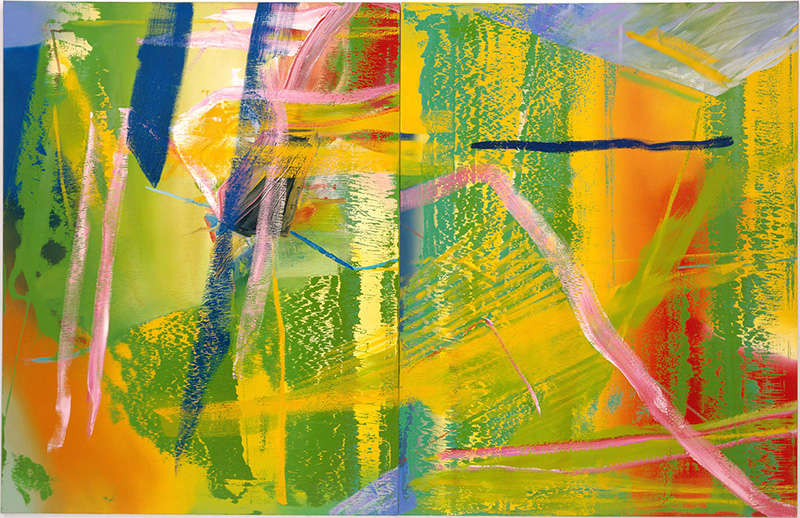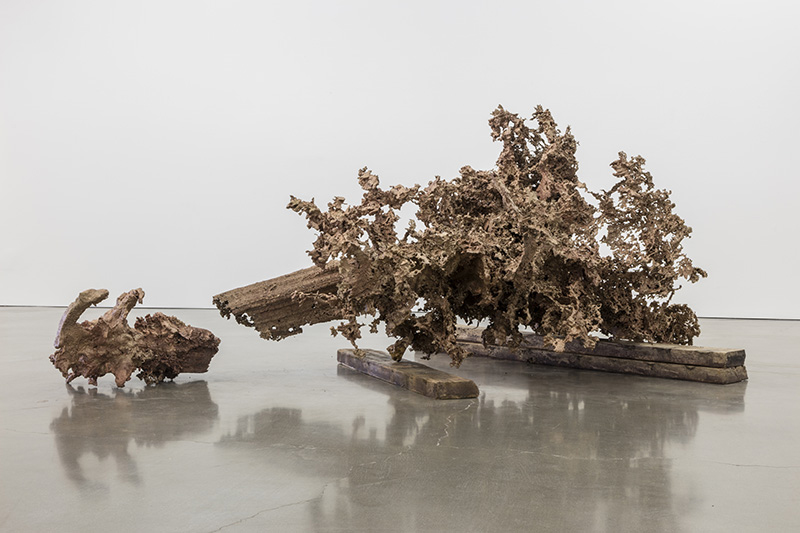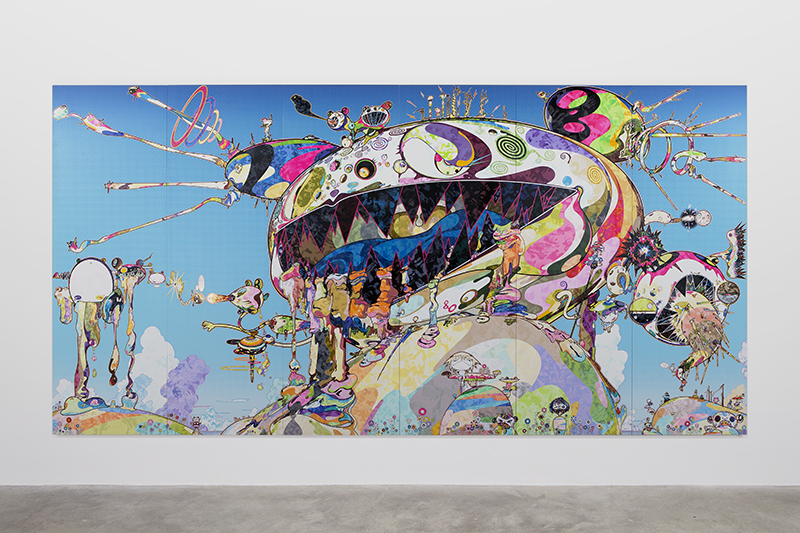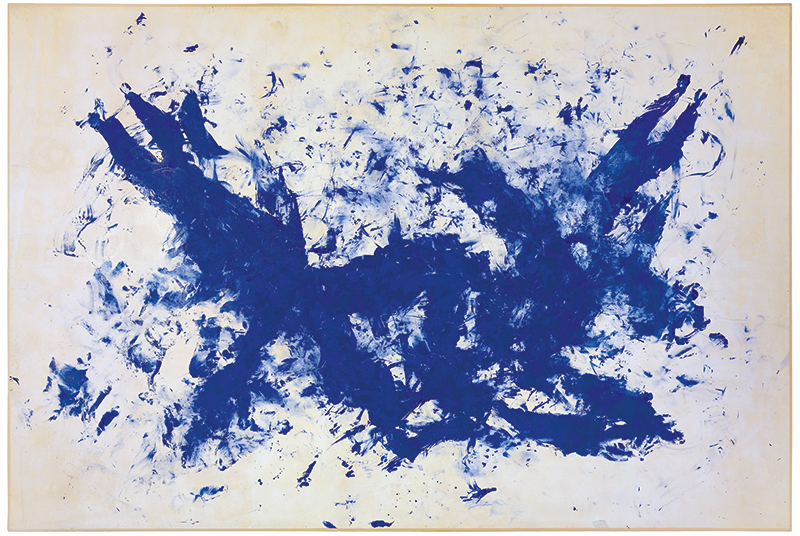ART-PRESENTATION:In Tune With The World
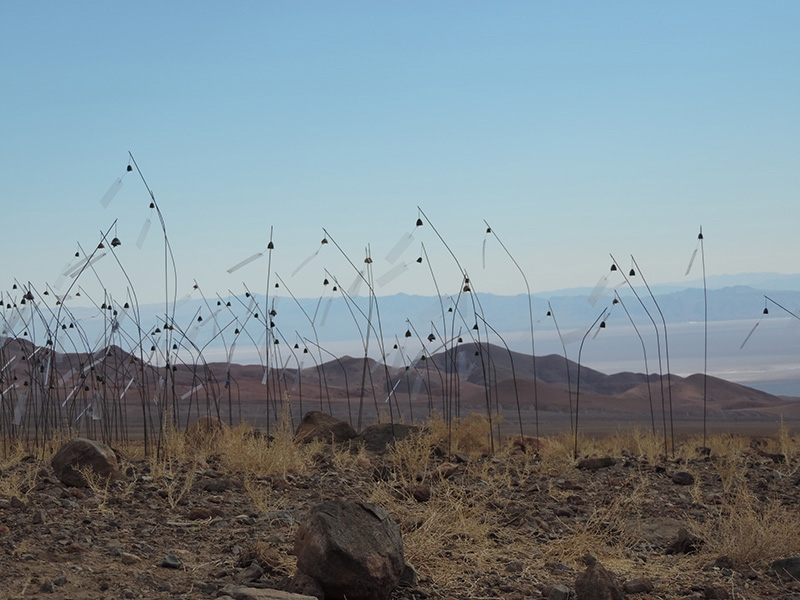 Bringing together modern and contemporary artworks, of several different mediums, the theme of the exhibition “In tune with the world” reflects today’s questions about man’s place in the universe and the bonds that tie him to his surrounding environment and living world, highlighting the connections between the human, animal, vegetal and mineral worlds.
Bringing together modern and contemporary artworks, of several different mediums, the theme of the exhibition “In tune with the world” reflects today’s questions about man’s place in the universe and the bonds that tie him to his surrounding environment and living world, highlighting the connections between the human, animal, vegetal and mineral worlds.
By Dimitris Lempesis
Photo: Fondation Louis Vuitton Archive
The exhibition “In Tune with the World” that is on presentation at FondationLouis Vuitton in Paris consists of two complementary sequences that cover the entire building’s spaces. Sequence A, is located on the galleries of the 2nd floor offers an immersion into the world Takashi Murakami. Through the multiplicity of forms and materials represented in this exhibition, the prolific work of Takashi Murakami gives free rein to an unbridled imagination, saturated with colours and populated by fantastic creatures, half-human-half-animal, mixing popular and scholarly cultures, Buddhist iconography and manga, tradition and modernity, West and East, ancestral techniques and advanced technology. This display is organized around three motifs: Gallery 9 is dedicated to “DOB”, the first character invented by the artist in 1993 and considered to be his alter ego. He appears both in the guise of a cute rodent in the style of Mickey Mouse and as a malicious, fierce monster, covered in eyes and sharp teeth. By borrowing from the traditional iconography of 18th Century Japanese painting and combining it with the style of the great historical frescoes, the artist delivers a contemporary version of the Eight Immortals of the Taoist religion, “The Octopus eats its own leg” (2017), is on presentation for the first time in Paris in Gallery 10, depicting characters from Chinese mythology surrounded by lavish, marvellous fauna and flora. Gallery 11 features a space of Kawaii (meaning ”cute” in Japanese). The artist reinterprets this Japanese aesthetic through a variety of forms and media: sculpture, wallpapers, flower paintings and animated films inspired by manga. Sequence B, that extends over the other three floors of the building and the outside Grotto area, entitled “Man in the living universe” is inspired by the assertion of Roland Barthes in “La Chambre Claire” (1980) “I have determined to be guided by the consciousness of my feelings”, and themed around the idea of emotional affinity, works by 28 French and International artists from different generations and techniques are on presentation. The presentation is structured around three complementary themes, each presented on one floor of the building: “Irradiances” (1st floor), “Là, infiniment…” (Ground floor) and “L’Homme qui chavire” (Pool level). The title “Irradiances” refers to the light beam of Dan Flavin and brings together works in a variety of media: paintings, sculptures, videos, installations. Is on presentation in the galleries 5, 6 and 7. Each work is about man’s continuous dialogue with nature, exploring how different materials and their metamorphoses can create a cosmic landscape. Dan Flavin’s “Untitled”, one of his first fluorescent tube creations, exudes a force from within that gives the sculpture a unique quality. Whilst the dazzling colours are rigorously structured in “Lilak” (1982) by Gerhard Richter, the two works in his “Flow” (2013) series refers to the flow of paint spread by the artist’s hand and tamed by a glass panel placed on the surface acting as a mirror. Sigmar Polke adopts a secretly alchemical approach in his work “Nachtkappe I” (1986), born from a unique blend of paint, indigo juice and alcohol varnish. “Water Cast 6” (2015) by Matthew Barney presents the explosive result of mixing molten bronze with water, which produces a set of abstract organic forms reminiscent of the subtleties of fine jewellery. Pierre Huyghe’s aquarium, entitled “Cambrian explosion 10” (2014), echoes the eponymous event which marked the appearance of large animal species between 530 and 542 million years ago. The work takes the form of an autonomously evolving ecosystem. Yves Klein‘s “Monochrome IKB81” (1957) instantly conveys a “zone of pictorial sensitivity”, while the sponge works “RE46” (1960) and “SE231” (1960) see living matter saturated with the same blue pigment. In the sculptures, “Halo” (1985) and “Is” (1989), James Lee Byars combines two mineral materials, copper and marble, with the extreme refinement of gold, in search of a perfect form. Anicka Yi‘s 3D video, “The Flavor Genome” (2016) (co-acquired with the Guggenheim Museum-New York), develops a fictional documentary depicting the search for an aroma in the Amazonian rainforest. “Animitas” (2014) by Christian Boltanski consists of a real-time film using a single static shot in the Atacama Desert in Chile and a bed of flowers. By way of reworking iconic works from the history of art, the section “Here, infinitely …” three artists that reflect on man’s domination throughout history as well as on his potential demise. Inspired by Michelangelo’s “David”, of which here only the legs remain, Adrián Villar Rojas‘ monumental marble sculpture, “Untitled”, from the series “Theatre of Disappearance” (2017), appears as the sole remnant of a post-apocalyptic world. With “Bathers in Asnières” (2010), Wilhelm Sasnal reinterprets Seurat’s work based on memories related to life in Poland in 1939. Combining images in different sequences with the haunting refrain of music by Alton Ellis “I was born a loser” / “I was born a winner”, “Nightlife“ (2015) by Cyprien Gaillard offers the viewer an immersive experience in 3D. The sequence “The man who capsizes” at the pool level, is inspired by the body in all its forms, from the most tangible to the most imaginary, taking “The Man who capsizes” (1950-51) by Alberto Giacometti as its starting point, around which a set of four other works by the artist is presented: “Three men walking I” (1948), “Bust of a Man sitting” (1965), “Tall Woman II” (1960), and “Woman from Venice III” (1956-1957) which is exhibited for the first time. At the entrance to gallery 1, in “M.2062 (Fitzcarraldo” (2014), Dominique Gonzalez-Foerster makes an appearance in the form of a hologram of the character Fitzcarraldo, the protagonist of a work of fiction by Werner Herzog. “Entrare nell’Opera” (1971), a photographic work by Giovanni Anselmo, shows a silhouette absorbed into an infinite landscape. The bronze sculpture of Kiki Smith, the “Annunciation” (2010), imposes a mysterious presence. In Yves Klein‘s anthropometry “ANT 104” (1960), the imprint of bodies, “living paint brushes”, is revealed by the single blue pigment. In the second episode of his trilogy, “Emmisary Forks at Perfection” (2015), Ian Cheng presents a creature entirely programmed by software, an alternative to faded humanity. Exhibited for the first time in France, Pierre Huyghe‘s “Untitled (Human Mask)” (2014) shows a monkey dressed as a little girl wearing a Japanese Noh theatre mask, wandering around a deserted restaurant near Fukushima. In “La ballade de Trotski” (1996), Maurizio Cattelan represents mankind with a horse, evoking the possible end of utopia. Self-portraits of the artist in latex, “Spermini” (1997), address the matter of the double and cloning. Philippe Parreno opens and closes the sequence at the pool level with two videos: the first, “The Writer” (2007), at the entrance to gallery 1, appropriates one of the first robots created in the 18th Century, whilst “Anywhen” (2017), in Gallery 3, films an octopus responding to its environment, accompanied by a soundtrack inspired by James Joyce’s Finnegans Wake.
Info: Head Curator: Suzanne Pagé, Curators: Angéline Scherf, Ludovic Delalande and Claire Staebler, Fondation Louis Vuitton, 8 avenue du Mahatma Gandhi, Bois de Boulogne, Paris, Duration 11/4-27/8/18, Days and Hours: Mon & Wed-Thu 12:00-19:00, Fri 12:00-21:00, Sat-Sun 11:00-20:00, www.fondationlouisvuitton.fr
